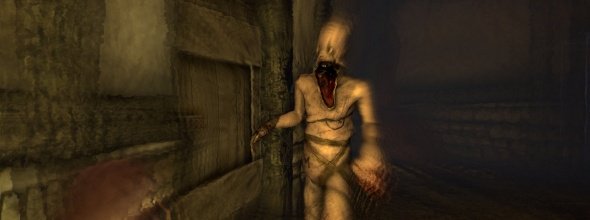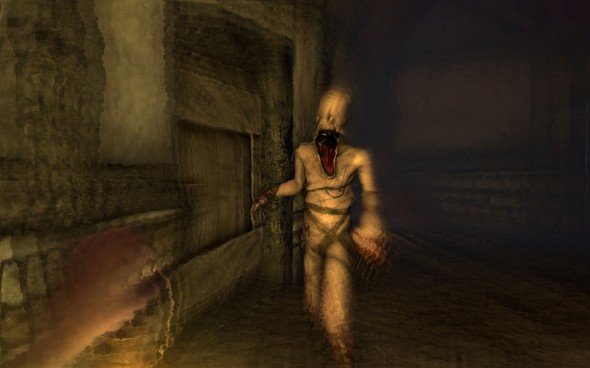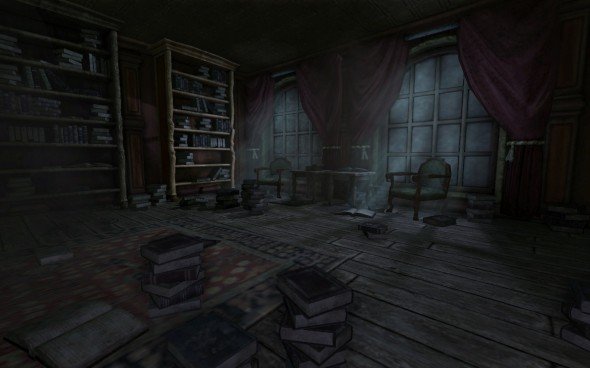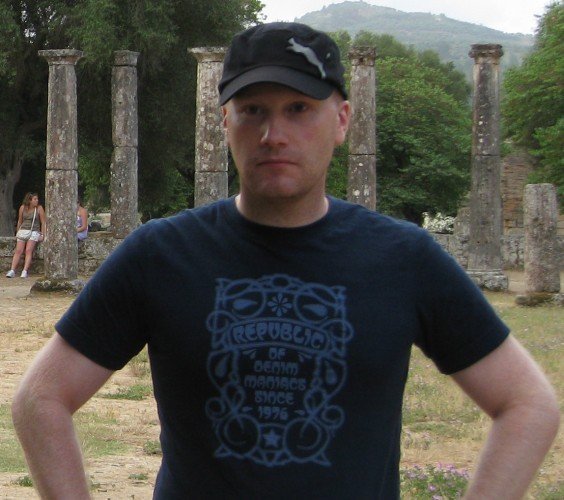The Wednesday Interview - Amnesia: The Dark Descent

A lot of things in life are only scary in a certain context. Buses: not scary, unless you're about to be hit by one. Mothers-in-law: not scary at distances over two feet. Amnesia is scary everywhere.
The spiritual heir to the Penumbra series from Swedish indies Frictional, Amnesia: The Dark Descent is arch survival horror. I've been playing it and scaring myself silly, and thought a chat with Frictional might keep the darkness at bay. Fat chance...

PC Gamer: Can you give us a little background on Frictional? How did the studio come about?
Thomas: We kinda started out in 2005 when we began work on the Penumbra Tech Demo for a school course. Me and Jens had worked together before though, and met when he volunteered sounds for a (never completed) horror game I was working on. Anyway, after we completed the tech demo, we put it up on the net and it got so popular that we decided to make a commercial version. Later in January 2007, Frictional Games was officially formed and in March the same year Penumbra: Overture was released.
PC Gamer: Penumbra was pretty well-loved. How successful was the game for you?
Thomas: Even though there were a bunch of problems, I would have to say that the game was pretty successful. Financially, it has kept us afloat and enabled us to work full-time with games, but just barely. But considering the amount of people that now know of Penumbra, we are extremely pleased with the success! Hearing Penumbra mentioned along with Silent Hill and the other established horror games makes us all warm and fuzzy on the inside.
PC Gamer: There seems to be a logical extension of ideas from Penumbra to Amnesia. Can you tell us a little about the evolution of Amnesia, and what you learned from making Penumbra?
The biggest gaming news, reviews and hardware deals
Keep up to date with the most important stories and the best deals, as picked by the PC Gamer team.
Thomas: The main thing we have learned is how to do development. How we should organize things and go about designing a game. The work-flow we have had on Amnesia is a gigantic leap forward from what we used to have. This in turn has enabled us to work more on the details, do things that previously were not really possible. The most important thing, design-wise, is probably to not have combat in a horror game. There is huge difference in how a player approaches a game when you don't have weapons, and it really lets us do things we couldn't have done otherwise.
That said, Amnesia actually started out totally different. The first design drafts were for a Super-Mario-like game (honest!), with bite-sized gameplay, where we had a core gameplay to build around. It didn't really work well though and we went back to a more Penumbra-like approach, and tried to take it a step further. So instead of starting with a mechanic, we started with a wanted experience, and then designed everything else to fit that.
PC Gamer: Psychological horror is at the heart of Amnesia, where the unseen is often more horrific than the quantified. Can you tell us how you achieve this, and sustain it over an 8-10 hour period?
Thomas: To a great extent, you do it yourself! The idea is only to hint at things and then let the players build up an image in their head. That is really our main design guideline and then all else comes from that. This means that we take a bit of a risk and rely on the player to be immersed. Most people play as intended though, so it's a pretty safe bet.
Apart from that, we also try to vary the experience as much as possible and build up contrasts. Make darker areas extra dark by having a bright area ahead of it; an intense section after a calmer one. Also, we try and slowly build up the game and events. There is an encounter in a water-filled area that we basically build up over almost two hours. So we try and take it slow and not to rush things. Often games try to slam stuff at the player as much as possible, but we would rather that the player take it slowly, and build that way.

PC Gamer: I'm a big fan of Headfirst's Call of Cthulhu: Dark Corners of The Earth, and there seem to be some thematic parallels with Amnesia. Was this an influence? Can you cite any other major influences for your work?
Thomas: I must confess that CoC: DCoTE is probably the only game I have actively waited for, and what a wait it was! I think it took 8 years from announcement to release. Big fan of the game too. Anyhow, during this time I kinda built up a mental picture of how I wanted the game to be, and this fantasy is something that has been poured into Penumbra and now also Amnesia. The actual game had great ideas on how much sanity effects a player can manage, and also how exciting sections without combat can be made. Thematic similarities are probably more due to the Lovecraftian inspiration than anything else. While Amnesia is not directly inspired by the man, his work and style is deeply rooted in our brains.
PC Gamer: There's some decidedly grisly and authentic subject matter in Amnesia – such as the medieval torture chambers in the Choir and the Transept. That must've taken some pretty interesting and dark research. Can you tell us about your background reading?
Thomas: The biggest thematic influence has probably been real life stuff like the Milgram and Stanford Prison experiments, and acts done by Unit 731 during WW2. These are all examples of how normal people can commit the cruellest crimes. We wanted to bring this into the game in a mature way and not just go all exploitative. The things described in the game are things that have happened in real-life and not only in the dark ages, but are happening in the present day too. I hope we have managed to bring this feel to the material, making the player truly uncomfortable and thoughtful about the subjects.
Amnesia's narrative, and the method of its revelation, seem pretty well-paced. What can you tell us about the process of turning a story into a game?
Thomas: Amnesia was a pretty long and clumsy process, and we reworked, scrapped and started over on a lot of the material. But to give a simplified view, it was something like this.
First we started out with a background story and then wrote a short story detailing the player's journey. This gave us a kind of guideline of how the experience should be. With that as base, we started on the design for the levels. When about 1/3 of the design was done we started adding more details to the background and adding dialogue and text. This is also the time when we started building the levels. We then continued like that by writing story, designing levels and building them all at the same time. By doing so all areas can influence one another, but most often the written design is what trumped the others.
PC Gamer: What's next for Frictional? Are you looking to expand? Would you look for Publisher backing? Or are you happy with your independence?
Thomas: What is next depends a bit on how the launch of Amnesia goes. We have no plans on any large expansions (2-3 more people, making us 7-8, would be perfect) and we want to stay independent. We are also keen on doing something for consoles and looking into other stuff besides horror. The future is pretty open right now and we just have to see how things go!


Al's games-and-tech quilling began on PC Gamer Specials magazine in the year 2000, before moving on to PC Format and then out into game development. In the last 23 years he’s reviewed a bajillion games and assorted pieces of hardware, spent 13 years in game dev, built PCs, dry-stone walls, and ebikes, and logged 1000 hours in Fallout 76. His current obsessions are tiny PCs and sledgehammering every single object in Dysmantle into its constituent parts.

